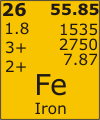Here's a decent video about water's unique properties. Watch the video and answer the following questions:
- Describe the shape of a water molecule
- What is cohesion?
- What property water molecule makes it cohesive?
- What property of water is attributed to its cohesive nature? (hint: think back to the paper clip activity!)
- What is adhesion?
- What is capillary action? Does it occur because of water's cohesive nature or adhesive nature?
- How does a droplet of water compare to a droplet of alcohol? Which has stronger cohesive forces?
- Does mercury have more or less cohesion than water?
- Go back into your notes or to p. 75 of your textbook: What are other terms used to describe cohesive and adhesive forces?


